Visualization Techniques and Nootropics for Clearer Thinking
Introduction
Clear thinking is a skill. Whether you’re preparing for a big presentation, making strategic decisions, or simply trying to manage your daily life, the ability to access mental clarity determines how well you perform. Unfortunately, stress, distraction, and mental fatigue often cloud the mind.
Two of the most effective ways to sharpen thought are visualization techniques and nootropics. Visualization helps you train the brain by mentally rehearsing success and clarity. Nootropics—supplements that enhance cognitive function—support the brain’s chemistry so that visualization and focus work even better.
This article explores the synergy of these tools: how visualization rewires the mind for performance, how nootropics enhance mental clarity, and how combining them can help you think more clearly under pressure.
Looking for supplements for people with Social Anxiety? Click here.
🎤 Why Clear Thinking Matters
🧠 The Role of Clarity in Performance
Clarity affects memory recall, decision-making, and creativity. When your thoughts are scattered, you lose flow and confidence. When your thinking is clear, you communicate effectively, solve problems faster, and project confidence in front of others.
😰 The Enemies of Clarity
- Stress and cortisol surges 🌀
- Information overload
- Fatigue or lack of sleep 😴
- Poor nutrition and dehydration
Visualization and nootropics target these obstacles: visualization retrains focus, while nootropics strengthen the brain’s biochemical foundation.
Looking for online therapy for people with Social Anxiety? Click Here.
🌌 What Is Visualization?

Visualization, also called mental imagery, is the practice of creating vivid mental pictures to prepare the brain for success. Athletes, performers, and leaders use it to rehearse situations and build confidence.
🧠 The Science
Research shows that imagining an action activates many of the same neural pathways as performing it physically. When you visualize yourself speaking clearly, solving problems, or recalling facts, your brain primes itself for those outcomes.
Benefits for Clear Thinking
- Improves focus and recall
- Builds confidence under stress
- Creates mental “blueprints” for success
- Reduces anxiety by making situations feel familiar
🌟 Visualization Techniques for Clearer Thinking
Here are the most effective visualization methods for boosting clarity.
🎬 Mental Rehearsal
How: Imagine yourself going through an event step by step: walking onto a stage, greeting the audience, delivering your speech with calm clarity.
Why it works: Prepares your brain for the sequence, reducing surprises and stress.
🖼️ Visualization with Detail (Sensory Imagery)
How: Visualize with all senses—what you see, hear, feel, even smell.
Why it works: The richer the imagery, the more your brain encodes it as “real.”
🪞 Mirror Visualization
How: Picture yourself watching a confident version of yourself on stage or in a meeting.
Why it works: Helps separate anxiety from performance, allowing you to “step into” confidence.
🌊 Clear Mind Visualization
How: Picture your mind as a glass of cloudy water. With each deep breath, the water clears.
Why it works: Reduces mental chatter and sharpens focus.
🌈 Success Anchoring
How: Visualize a past moment of success, then imagine carrying that same energy into your current challenge.
Why it works: Builds confidence by linking memory and current performance.
🌿 Nootropics for Clear Thinking
Nootropics are natural or synthetic compounds that improve cognitive functions such as memory, attention, and clarity. Here are the top natural options for clear thinking.
🍃 Bacopa Monnieri
How it works: Enhances synaptic communication and reduces anxiety.
Benefits: Improves memory recall and calm focus.
Dose: 300–600 mg extract (standardized to bacosides).
🌿 Ginkgo Biloba
How it works: Increases blood flow to the brain, supports neurotransmitters.
Benefits: Enhances working memory, improves reaction time.
Dose: 120–240 mg extract.
🍄 Lion’s Mane Mushroom
How it works: Promotes nerve growth factor (NGF) and brain plasticity.
Benefits: Sharpens clarity, reduces brain fog, supports long-term cognition.
Dose: 1000–3000 mg extract.
🌱 Rhodiola Rosea
How it works: Modulates stress hormones and supports dopamine/serotonin.
Benefits: Prevents fatigue, improves focus during stress.
Dose: 200–400 mg extract.
🌺 Panax Ginseng
How it works: Boosts acetylcholine and dopamine activity.
Benefits: Enhances attention and short-term memory.
Dose: 200–400 mg extract.
🧩 Phosphatidylserine (PS)
How it works: Supports cell signaling in the brain.
Benefits: Improves memory recall speed, reduces cortisol.
Dose: 100–300 mg daily.
🐟 Omega-3 Fatty Acids
How it works: Enhances neurotransmission, reduces neuroinflammation.
Benefits: Stabilizes mood, supports memory clarity.
Dose: 1000–2000 mg EPA/DHA daily.
🧂 Acetyl-L-Carnitine (ALCAR)
How it works: Boosts mitochondrial energy and acetylcholine production.
Benefits: Improves mental energy and clarity.
Dose: 500–2000 mg.
Looking for supplements for people with Social Anxiety? Click here.
🌬️ Pairing Visualization with Nootropics
Visualization primes the mind, nootropics prime the brain. Together, they create a powerful synergy for clear thinking.
🌅 Morning Routine
Supplements: Lion’s Mane, Omega-3, Rhodiola 🌱🍄🐟
Visualization: “Clear Mind Visualization” for 5 minutes.
Why: Sets baseline clarity and resilience for the day.
🌤️ Midday Focus Boost
Supplements: Ginkgo Biloba, Bacopa 🌿🍃
Visualization: Mental rehearsal of upcoming tasks.
Why: Boosts focus for meetings and mental performance.
🌙 Evening Recovery
Supplements: Magnesium + Ashwagandha (for calm recovery) 🌺🧩
Visualization: Reflect on the day and picture yourself handling tomorrow’s challenges with ease.
Why: Prepares brain for restful sleep and next-day clarity.
⏱️ Pre-Presentation Routine (45 Minutes Before)
Supplements: Ginkgo (120 mg), Rhodiola (200 mg), small green tea 🍵.
Visualization: Full sensory mental rehearsal of walking on stage, speaking with clarity, and finishing with confidence.
Breathwork: Physiological sighs 😮💨 to calm adrenaline.
Result: Energized yet calm, sharp recall, clear delivery.
🛋️ Therapy Tools That Reinforce Clarity

🧩 CBT Reframes
“If I forget a line, it’s not failure—I can improvise.”
“Clarity comes from calm, not from rushing.”
🎤 Exposure Practice
Practice speaking with visualization and nootropic stack to anchor clarity.
💖 Self-Compassion
“My worth isn’t tied to perfection.”
“Nerves are natural, but my clarity will carry through.”
Looking for online therapy for people with Social Anxiety? Click Here.
🚫 What to Avoid for Clear Thinking
Excessive caffeine: Over 200 mg increases jitters and worsens memory under stress.
Alcohol: Impairs recall and clarity.
Refined sugar: Energy spikes and crashes cloud thinking.
🌱 Long-Term Benefits of the Combo
After 2–4 Weeks: Reduced brain fog, improved recall.
After 6–8 Weeks: Stronger memory, less stress interference.
After 3–6 Months: Clearer baseline thinking, improved resilience to pressure.
Visualization + nootropics build both mental practice and biological resilience, creating long-term clarity.
⚠️ Safety Notes
Always consult a healthcare provider before starting nootropics.
Test supplements before important events.
Start one at a time to monitor effects.
🎤 Conclusion
Clear thinking isn’t an accident—it’s a practice. Visualization techniques create mental blueprints for success, while nootropics provide the biochemical support to execute with clarity.
The most powerful tools are simple: visualize your success, supplement for clarity, breathe deeply, and train your mind.
With consistency, you can transform scattered thoughts into sharp focus, nervousness into calm presence, and uncertainty into confident clarity.
📚 References
Stough, C., et al. (2001). The chronic effects of Bacopa monnieri on cognitive function. Psychopharmacology.
Kennedy, D. O., et al. (2007). Ginkgo biloba and cognitive performance. Psychopharmacology.
Mori, K., et al. (2009). Improvement of cognitive functions by Lion’s Mane. Biomedical Research.
Panossian, A., & Wikman, G. (2010). Adaptogens and stress. Current Clinical Pharmacology.
Reay, J. L., et al. (2005). Panax ginseng improves working memory. Appetite.
Crook, T. H., et al. (1991). Effects of phosphatidylserine. Neurology.
Freeman, M. P., et al. (2006). Omega-3s in mood and cognition. American Journal of Psychiatry.
Pettegrew, J. W., et al. (2000). Acetyl-L-carnitine effects on cognition. Neurobiology of Aging.
Holmes, E. A., et al. (2016). Mental imagery and emotion regulation. Trends in Cognitive Sciences.
Hofmann, S. G., et al. (2012). CBT for anxiety. Cognitive Therapy and Research.
Related Posts
-

Supplements for Staying Present and Grounded
L-Theanine is nature’s calm focus enhancer 🍃. Derived from green tea, it promotes relaxation without drowsiness by balancing GABA, serotonin, and dopamine. Learn how this amino acid supports smooth focus, emotional balance, and mindful presence in daily life.
-
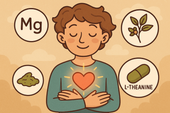
Supplements That Support Emotional Openness
Emotional openness starts in the body 🌿. When your nervous system feels safe, your heart can express freely. Learn how supplements like magnesium, Ashwagandha, and L-theanine support calm connection, balanced emotions, and the courage to stay authentically open.
-
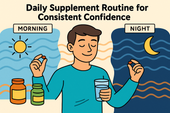
Daily Supplement Routine for Consistent Confidence
Confidence is built through rhythm, not luck 🌿. A daily supplement routine can help your energy, mood, and focus stay balanced from morning to night. Learn how adaptogens, magnesium, and B vitamins work together to create steady calm and lasting self-assurance.
-
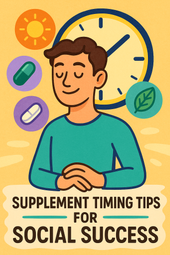
Supplement Timing Tips for Social Success
Social confidence has its own rhythm 🌿. When you time your supplements to match your body’s natural energy cycles, calm and focus align effortlessly. Learn how magnesium, L-theanine, and adaptogens can help you stay grounded, charismatic, and fully present at just the right moment.
-
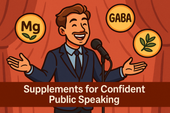
Supplements for Confident Public Speaking
Public speaking confidence begins with biology 🎤🌿. When your nervous system is calm and your neurotransmitters are balanced, your voice, focus, and presence flow naturally. Learn how supplements like magnesium, GABA, and adaptogens can align your body’s chemistry with the calm clarity you need to speak authentically.
-

Travel-Friendly Supplements for On-the-Go Confidence
Magnesium is the ultimate travel mineral for calm and balance ✈️🌿. It relaxes the nervous system, eases stress from jet lag or fatigue, and supports muscle and mental recovery. Discover how this essential nutrient keeps you centered, focused, and energized wherever your journey takes you.
-

Supplements for Confident Video Calls
Magnesium is the mineral that brings calm to both body and mind 🌿. It supports relaxation, better sleep, and a stable mood by regulating cortisol and soothing the nervous system. Learn how magnesium supplements can restore balance, reduce anxiety, and help you feel centered under stress.
-

Ashwagandha for Calming the Stress Response
Ashwagandha helps your body remember how to relax 🌿. As one of the most trusted adaptogens, it calms the stress response by lowering cortisol, soothing the nervous system, and restoring natural energy balance. Learn how this ancient herb promotes deeper sleep, emotional steadiness, and resilience in today’s high-stress world.
-
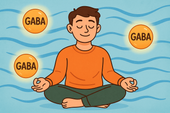
How GABA Supplements Can Help You Feel Grounded
GABA is the brain’s natural calm signal 🌿. When life feels overwhelming, this neurotransmitter helps quiet mental noise, relax muscles, and restore emotional balance. Learn how GABA supplements can calm the nervous system, reduce anxiety, and help you feel grounded in your body again.
-
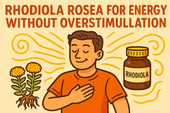
Rhodiola Rosea for Energy Without Overstimulation
Rhodiola rosea offers a rare kind of energy — one rooted in calm, not chaos 🌿. Known as the golden root, this adaptogen enhances endurance, focus, and mood by balancing cortisol and supporting the nervous system. Discover how Rhodiola restores natural vitality without the overstimulation of caffeine or stress-driven fatigue.
-
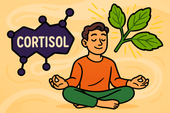
Holy Basil and Cortisol Control
Holy basil, or Tulsi, is one of nature’s most powerful adaptogens 🌿. Revered in Ayurvedic medicine for centuries, it helps balance cortisol, calm the mind, and protect the body from stress. Learn how holy basil restores hormonal harmony, supports energy, and promotes emotional resilience in a fast-paced world.
-
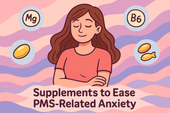
Supplements to Ease PMS-Related Anxiety
Hormones are the body’s messengers — guiding mood, energy, metabolism, and balance. 🌿 When these chemical signals flow in harmony, life feels stable and calm. Learn how nutrients, sleep, and stress management help keep hormonal communication clear, supporting emotional steadiness and overall vitality.
-
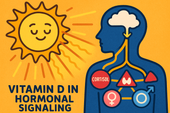
The Role of Vitamin D in Hormonal Signaling
Testosterone is more than a hormone — it’s a signal of strength, motivation, and vitality 💪. Learn how this key molecule shapes energy, mood, muscle growth, and focus in both men and women. Discover how nutrition, vitamin D, and minerals like zinc and magnesium support healthy testosterone signaling for balanced power and performance.
-
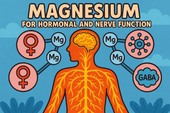
Magnesium for Hormonal and Nerve Function
Magnesium is the mineral that connects calm and vitality ⚡. It fuels nerve transmission, supports hormonal balance, and restores the body’s ability to relax under stress. Learn how magnesium strengthens communication between the nervous and endocrine systems, stabilizing cortisol, thyroid, and reproductive hormones for true equilibrium.
-

Zinc and Its Role in Hormonal Stability
Zinc is one of the body’s most powerful regulators ⚖️—a trace mineral that keeps hormones, metabolism, and energy in perfect rhythm. Learn how zinc supports testosterone, thyroid function, cortisol balance, and emotional stability while protecting against modern stress and deficiency. Discover why restoring zinc can help your body feel grounded, focused, and hormonally resilient.
-
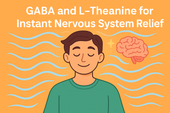
GABA and L-Theanine for Instant Nervous System Relief
When stress hits, your nervous system needs relief — not more stimulation 🌿. Discover how GABA and L-theanine work together to calm the body, quiet racing thoughts, and restore inner balance. Learn the science behind these natural compounds that ease tension, support emotional stability, and bring instant peace without sedation.
-
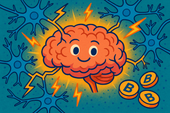
B-Vitamins for Faster Nerve Communication
Vitamin B1, or thiamine, is your brain’s ignition key 🔑—turning food into cellular energy and powering rapid nerve signaling. Discover how this essential nutrient fuels neurotransmitter activity, supports focus and coordination, and prevents fatigue or mental fog. Learn why maintaining optimal thiamine levels keeps your nerves firing fast and your mind sharp.
-

Supplements That Help You Stay Alert Without Anxiety
L-theanine is nature’s secret for calm focus and balanced energy 🌿. Found in green tea, this gentle amino acid promotes relaxation, supports alpha brain waves, and helps you stay alert without stress or grogginess. Discover how L-theanine can enhance focus, improve sleep quality, and restore mental calm in a fast-paced world.
-
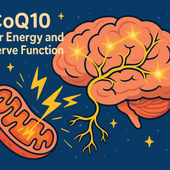
CoQ10 for Energy and Nerve Function
CoQ10 powers every cell in your body—from your heart to your brain ⚡. Learn how this essential compound fuels mitochondria, boosts nerve function, and protects your brain from oxidative stress. Discover how supplementing with CoQ10 can restore energy, sharpen focus, and support long-term neurological vitality.
-
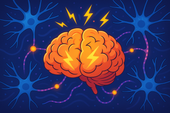
Supplements That Support Nerve Signaling for Mental Energy
Your brain’s electrical network depends on magnesium—one of the most vital minerals for nerve signaling, calm focus, and steady mental energy ⚡. Learn how this essential nutrient powers neurotransmission, supports relaxation, and helps protect your nervous system from stress overload—so your mind feels balanced, alert, and resilient every day.
-
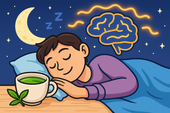
L-Theanine for Sleep Without Grogginess
L-theanine offers a natural path to better sleep—without the next-day fog. 🌙 Found in green tea, this gentle amino acid calms the mind, lowers stress hormones, and promotes deep relaxation without sedation. Learn how L-theanine balances your brainwaves, reduces nighttime anxiety, and helps you wake up refreshed, alert, and clear-minded.
-
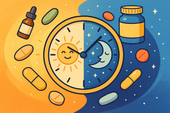
Supplements to Support the Circadian Rhythm
Your body’s natural clock depends on more than just sunlight—it also relies on key nutrients to stay in sync. 🌞🌙 Discover the best supplements to support your circadian rhythm, from melatonin and magnesium for deep sleep to vitamin D and adaptogens for morning energy. Learn how to realign your internal clock for better rest, sharper focus, and stable mood every day.
-
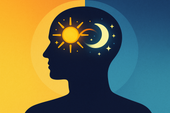
Melatonin and Cortisol: The Night vs. Day Hormones
Melatonin and cortisol are your body’s night-and-day hormones—one helping you drift into deep sleep, the other powering your alertness each morning. 🌙☀️ Learn how these two forces work together to regulate your energy, mood, and recovery. Discover how modern stress, artificial light, and poor routines can throw them off balance—and how to naturally reset your rhythm for calm nights and focused days.
-
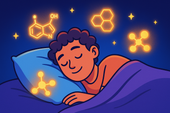
Supplements for Deeper Sleep and Nervous System Reset
Struggling to sleep even when you’re exhausted? 🌙 Discover how to reset your nervous system and achieve deeper, more restorative rest with the right blend of supplements, breathwork, and therapy. From magnesium and L-theanine to slow exhalations and somatic healing, this guide helps you rebuild your body’s natural rhythm of calm and recovery—so you can wake up truly renewed.
-
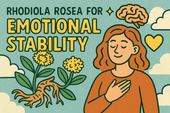
Rhodiola Rosea for Emotional Stability: Finding Balance Through Resilience
Stress is the body’s natural alarm system — useful in bursts, but draining when it never turns off. Learning to regulate it helps restore calm focus, emotional balance, and physical vitality. 🌿💫
-
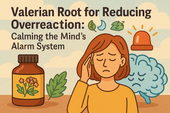
Valerian Root for Reducing Overreaction: Calming the Mind’s Alarm System
GABA is the brain’s natural brake pedal — calming overstimulation and helping you think clearly under stress. When balanced, it brings a sense of inner peace, emotional control, and focus. 🌿🧠💫
-

Supporting Adrenal Health for a Steadier Mood
Cortisol is the body’s built-in stress alarm — essential in short bursts but harmful when constantly elevated. Learning to balance it naturally restores calm, focus, and emotional stability. 🌿⚖️
-
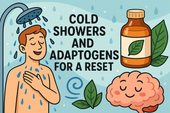
Cold Showers and Adaptogens for a Reset: Reclaiming Energy, Calm, and Control
Adaptogens help the body adapt to stress, restoring calm energy and balance. These ancient herbs strengthen resilience, regulate mood, and support focus — helping you stay grounded through life’s ups and downs. 🌿💫
-
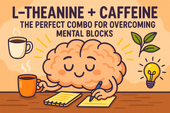
L-Theanine + Caffeine: The Perfect Combo for Overcoming Mental Blocks
Neurotransmitters are the brain’s messengers — tiny molecules that shape how we think, feel, and focus. When they’re in balance, we experience calm energy, clear thinking, and emotional harmony. 🌿🧠✨
-
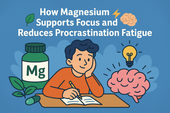
How Magnesium Supports Focus and Reduces Procrastination Fatigue
Magnesium is the quiet mineral behind mental clarity and steady focus. By calming the nervous system and restoring cellular energy, it helps transform fatigue and overthinking into calm, productive flow. 🌿⚡🧠
-

B Vitamins for Beating Procrastination and Boosting Energy
Procrastination isn’t just a mindset — it’s often a signal of low energy and nutrient depletion. B vitamins recharge the brain’s motivation circuits, boosting focus, clarity, and the drive to take action. 🌿⚡🧠
-
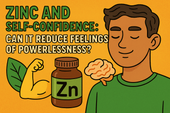
Zinc and Self-Confidence: Can It Reduce Feelings of Powerlessness?
Zinc isn’t just a mineral — it’s the foundation of emotional strength. By balancing neurotransmitters and calming the nervous system, it helps you feel more centered, assertive, and confident from the inside out. 🌿💪
-
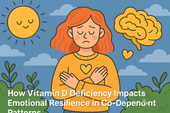
How Vitamin D Deficiency Impacts Emotional Resilience in Co-Dependent Patterns
Co-dependency is the emotional tug-of-war between connection and self-loss — a pattern born from giving too much and receiving too little. Learning to untangle this dynamic allows for real love rooted in balance, not fear. 🌿💛
-
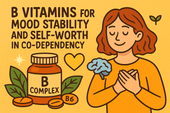
B Vitamins for Mood Stability and Self-Worth in Co-Dependency
Vitamin B1, or thiamine, powers both the body and the brain — fueling focus, energy, and emotional clarity. Supporting your nervous system with this essential nutrient helps restore calm and mental resilience. 🌿⚡🧠
-
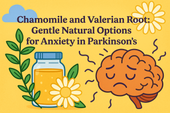
Chamomile and Valerian Root: Gentle Natural Options for Anxiety in Parkinson’s
Anxiety often feels like a storm inside the mind — racing thoughts, tightness, and unease that make it hard to focus or rest. But learning to understand and calm that inner storm opens the door to peace and emotional balance. 🌿🧠
-
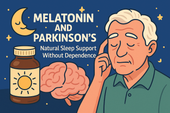
Melatonin and Parkinson’s: Natural Sleep Support Without Dependence
Melatonin is the body’s natural sleep hormone — guiding your mind into rest and your body into recovery. Supporting its natural rhythm can improve sleep quality, mood, and overall health without dependence. 🌙🧠
-
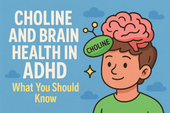
Choline and Brain Health in ADHD: What You Should Know
Inflammation can quietly affect both the body and mind, disrupting focus, mood, and energy. Understanding how it works — and how to calm it — is key to restoring balance, clarity, and long-term health. 🌿🧠
-
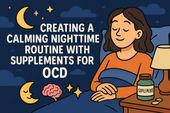
Creating a Calming Nighttime Routine with Supplements for OCD
Sleep is the brain’s nightly repair ritual — a time when emotional chaos settles and clarity returns. Prioritizing deep rest restores focus, calm, and resilience, helping both the body and mind recover naturally. 🌙🧠
-
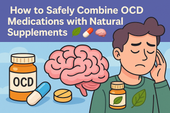
How to Safely Combine OCD Medications with Natural Supplements
Supplements bridge the gap between nutrition and mental wellness — supporting focus, calm, and energy from within. The right combination of nutrients can help balance mood, sharpen the mind, and restore long-term resilience. 🌿🧠
-
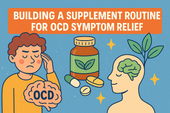
Building a Supplement Routine for OCD Symptom Relief
OCD can feel like being trapped in your own thoughts — a battle between control and chaos. Understanding the science behind these cycles is the first step toward breaking free and finding calm within the mind. 🌿🧠
-

Curcumin and Brain Inflammation in OCD: Can It Help?
Inflammation doesn’t just affect the body — it can silently influence the brain, fueling anxiety, fatigue, and mental fog. By understanding how inflammation works, we can learn how to calm the nervous system and restore inner balance. 🌿🧠
-
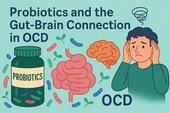
Probiotics and the Gut-Brain Connection in OCD
Serotonin, often called the “feel-good” chemical, shapes our mood, focus, and emotional balance. By keeping this neurotransmitter in harmony, we support calm thinking, better sleep, and greater mental resilience. 🌿🧠
-

B Vitamins and OCD: Supporting Energy and Neurotransmitter Balance
OCD isn’t just about habits — it’s about the brain’s struggle to find control in chaos. Understanding the neurological roots behind intrusive thoughts can help replace fear with clarity and guide healing toward calm awareness. 🌿🧠
-
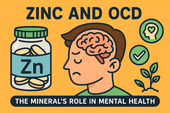
Zinc and OCD: The Mineral’s Role in Mental Health
Zinc is more than a trace mineral — it’s a key regulator of mood, memory, and emotional balance. By stabilizing neurotransmitters like serotonin and glutamate, zinc helps calm obsessive thought patterns and supports overall mental clarity. 🌿🧠
-
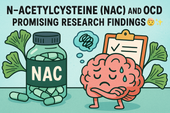
N-Acetylcysteine (NAC) and OCD: Promising Research Findings
Antioxidants act as the body’s natural defense system, neutralizing free radicals that damage brain cells and worsen anxiety or fatigue. Supporting antioxidant balance with nutrition and supplements helps protect focus, memory, and emotional stability. 🌿🧠
-
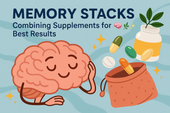
Memory Stacks: Combining Supplements for Best Results
Memory weaves the story of who we are — connecting past, present, and future through every experience we store and recall. Strengthening memory means nurturing the brain’s energy, balance, and emotional calm so learning becomes effortless. 🌿🧠
-
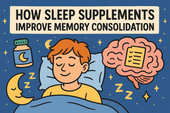
How Sleep Supplements Improve Memory Consolidation
Stress can cloud thinking, disrupt sleep, and weaken memory — but understanding its effects on the brain is the first step toward calm. By learning to regulate the nervous system, we can protect focus, energy, and emotional balance. 🌿🧠
-
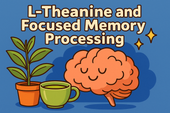
L-Theanine and Focused Memory Processing
Science is the art of curiosity and precision — a quest to understand the unseen patterns that shape life. From molecules to galaxies, every discovery begins with observation, imagination, and the courage to ask “why.” 🔬💡
-
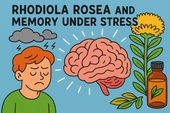
Rhodiola Rosea and Memory Under Stress
Stress clouds memory, slows thinking, and drains energy — but the good news is, the brain can recover. By understanding how stress affects focus and emotion, we can learn to regulate it, restore clarity, and protect long-term cognitive health. 🌿🧠
-
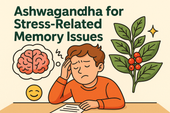
Ashwagandha for Stress-Related Memory Issues
Adaptogens are nature’s answer to modern stress. These powerful herbs — like Ashwagandha, Rhodiola, and Holy Basil — help balance cortisol, support calm focus, and strengthen the body’s resilience, bringing the mind back to harmony. 🌿🧘♀️


















































